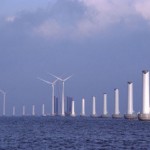US government gives offshore wind power more financial support
 Despite persistent problems associated with the global economic crisis and a government fiscal policy deeply paralyzed along partisan lines, the US continues to express great interest in developing its offshore wind industry.
Despite persistent problems associated with the global economic crisis and a government fiscal policy deeply paralyzed along partisan lines, the US continues to express great interest in developing its offshore wind industry.
The latest proof of America’s faith in the rapidly-emerging offshore sector occurred earlier this month when Energy Secretary Steven Chu announced €31 million for projects that are expected to speed technical innovations, lower costs, and shorten the timeline for deploying offshore wind energy systems.
“The US has an abundant offshore wind resource that remains untapped,” Chu, a co-winner of the 1997 Nobel Prize for Physics and a known advocate for developing renewable energies, said in a press release.
“Through these awards, the Department of Energy is developing the critical technology and knowledge base necessary to responsibly develop this resource, enhance our energy security, and create new clean energy jobs,” Chu said.
The press release said the 41 projects will advance wind turbine design tools and hardware, improve information about offshore wind resources, and accelerate the deployment of offshore wind by reducing market barriers such as supply chain development, transmission and infrastructure.
As Energy Secretary, Chu is responsible for promoting investments in clean energy, reducing the nation’s dependence on foreign oil, addressing the global climate crisis, and creating millions of new jobs. In February, he was quoted as saying the Energy Department would help “provide national leadership in accelerating offshore wind energy deployment.”
“Offshore wind energy can provide access to a vast clean, domestic, renewable resource that can help the United States meet its critical energy, environmental and economic challenges and provide energy to coastal cities where much of the nation’s population and electricity demand lies,” the press release added.
Nineteen of the awards are to address technical challenges and provide the foundation for a cost-competitive offshore wind industry in the US, the release said. Another 22 market-barrier removal projects, the release added, will research factors limiting the deployment of offshore wind in the nation’s coastal and Great Lakes regions.
While there has been much discussion about tapping into the offshore sector, there are still no wind farms located in US waters even though Cape Wind, after a decade-long fight, has now been cleared by regulatory authorities to build 130 turbines in Nantucket Sound, Massachusetts.
By comparison, recently released EWEA figures showed that there are now turbines totalling 3,294 MW of capacity in European waters.






